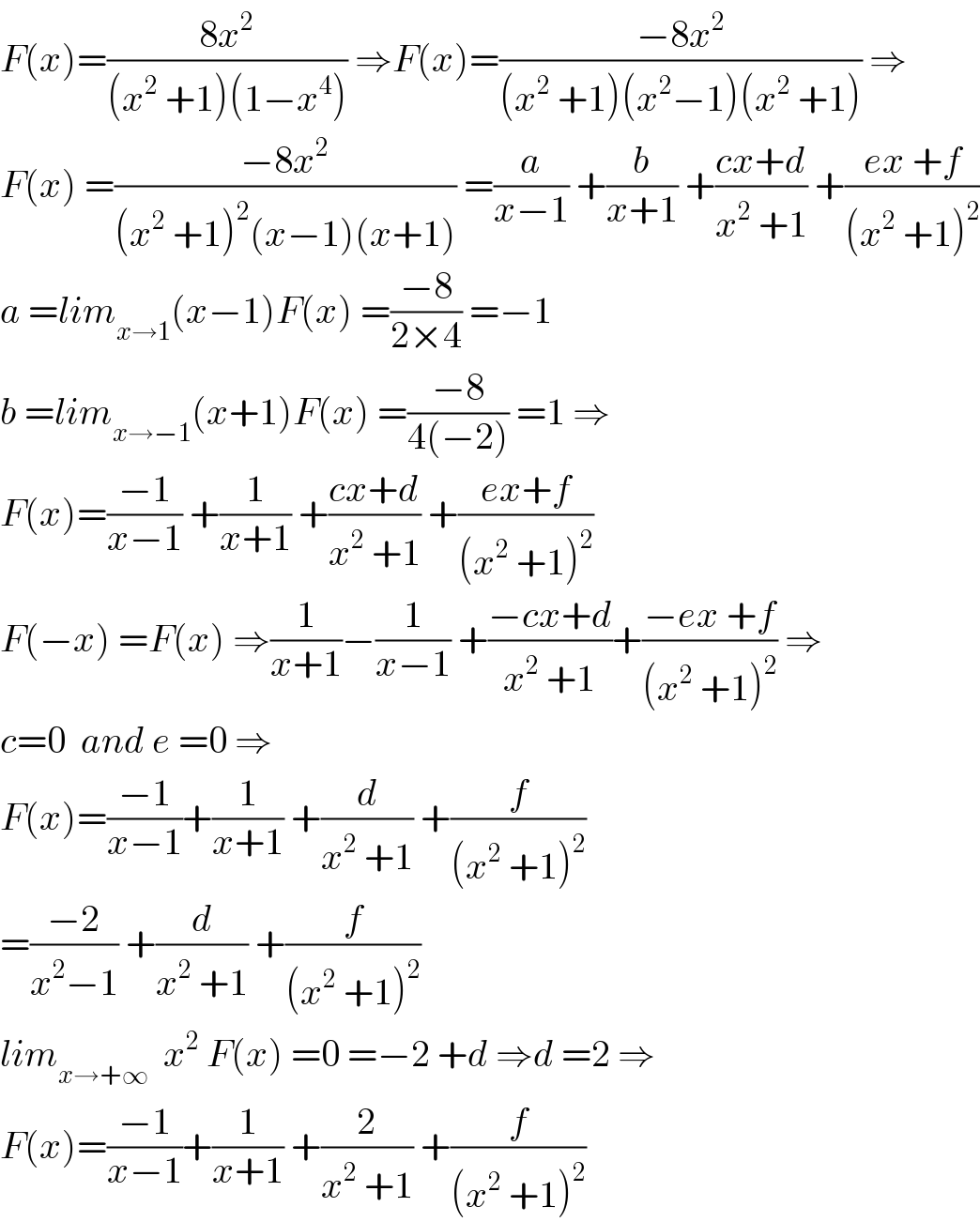
Question and Answers Forum
Question Number 67564 by azizullah last updated on 28/Aug/19

Commented by mathmax by abdo last updated on 28/Aug/19

Commented by mathmax by abdo last updated on 28/Aug/19

Commented by Rasheed.Sindhi last updated on 29/Aug/19

Commented by mathmax by abdo last updated on 29/Aug/19

Commented by Rasheed.Sindhi last updated on 29/Aug/19

Commented by azizullah last updated on 29/Aug/19

Commented by Abdo msup. last updated on 30/Aug/19

Commented by azizullah last updated on 13/Sep/19

